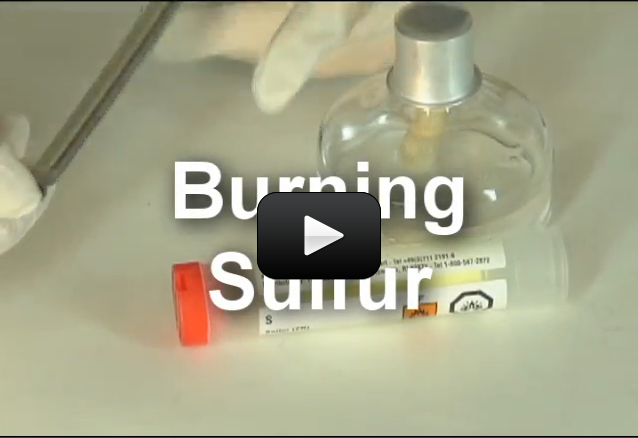This experiment is for advanced students.
Brimstone is another name for sulfur, and if you’ve ever smelled it burn…..whoa….I’m telling you ….you will see for yourself in this lab. It is quite a smell, for sure. Sulfur is element #6 on the periodic table. Sulfur is used in fertilizer, black powder, matches, and insecticides. In pioneer times sulfur was put into patent medicines and used as a laxative.
To further the evil reputation of sulfur, or brimstone, when sulfur is burned in a coal fired power plant, sulfur dioxide is produced. The sulfur is spewed into the air, where it is reacts with moisture in the air to form sulfuric acid. The clouds get full and need to let go of this sulfuric acid. Down comes the acid rain to wreak havoc on the masonry and plant life below.
Please login or register to read the rest of this content.


You can leave it in the flame to fume it off, just be sure to do this outside.
How do I remove the burned and hardened sulfur from the spoon??
Thank you!!!
The C3000 is included with our Science Mastery Diamond program. You can also purchase it separately usually at a toy store, but make sure it’s the one from Thames and Kosmos.
where do you get the kit?
You need to purchase denatured alcohol because it’s hazardous to ship, and the test tubes are in the box in the foam packaging. The O2 you create during the experiments. Enjoy!
We just broke into our chemistry 3000 box and wondered where we can find the denatured alcohol and the O2 test tube that’s needed to light the burner and do this experiment?
There’s a couple of experiments that show you how to do this… try the one on Electrolysis first, and then if you’ve got the advanced access, try Detonating Bubbles.
how do you make the test tube fill with oxygen?